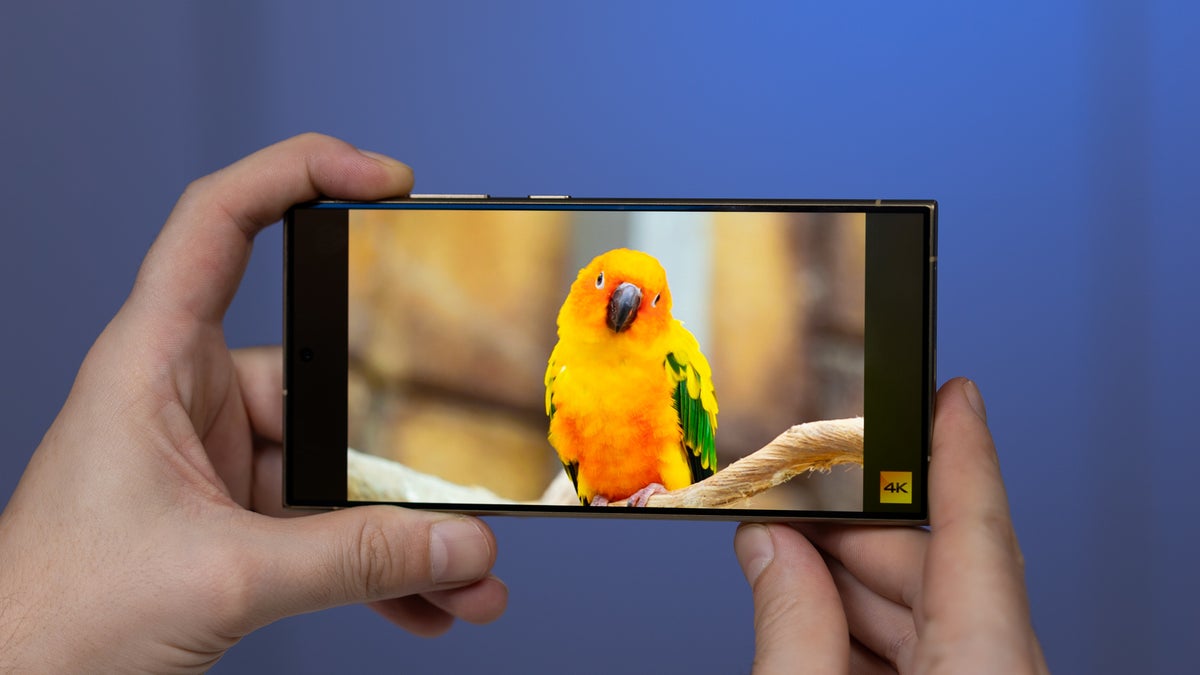And that is a shame!
Is Gorilla Armor really scratch-resistant?
OK, when it was announced, Gorilla Armor was presented as the “toughest, most scratch resistant, and most optically advanced Gorilla Glass yet”. Nowadays, when I hear this, I just roll my eyes — “Sure, scratches at level 6, deeper grooves at level 7, right?”.Thus far, until the year 2024, I had never seen a smartphone that didn’t get random screen scratches over time, no matter how much you tried to baby it.
Well, I have been using the Galaxy S24 Ultra since its release in January. It has been in my pocket, on my desk, in random compartments in my car, on dog walks, work trips, propped up on random surfaces to record videos in less-than-clean rehearsal rooms. The only protector I have on it is a very thin case.
By this time, I would expect the phone’s screen to be riddled with micro-scratches. You know, it hasn’t been dropped or anything, but any phone I’ve owned would eventually gather micro swirls and some grooves on the screen, that are visible when inspecting the glass under bright lights.
The Galaxy S24 Ultra’s display still looks like new. Yes, yes, I realize I am sounding like an ad read here, but quite the contrary — I am happy and amazed that the production of such glass has become possible. Finally, after years and years of “scratch-resistant” promises, we finally got one that kept its promise!
Just to illustrate my point, I put the Galaxy S24 Ultra that I have been using for the past 8-ish months right next to the brand-new iPhone 16 Pro Max that we have in the office. Apple’s phones are still super-fresh and this unit has not left our studio. It has been used for benchmarks and various design photos, so it has been put face-up, face-down on a few surfaces and propped up a few times. Unlike the Galaxy S24 Ultra, it hasn’t been “properly” used as a long-time phone.
Well, it already has micro-scratches on its screen, which can even be caught on photo:

iPhone 16 Pro Max – left; Galaxy S24 Ultra – right (Image Credit – PhoneArena)
No, this is not an anti-iPhone post, I also love using iPhones and iPads, this is a “we need more Gorilla Armor” in the world, so stay on topic!
Next up –
The anti-reflective coating is wild!
The second part of the marketing materials about Gorilla Armor promised up to 75% less reflectance. Now, this sounded like something straight out of a fairy tale. We had seen anti-reflecting coating on other products, which was pretty OK, but up to 75% less glare? No way, right?
Cue all the YouTube videos and reviews praising the Gorilla Armor’s low reflectivity.


iPhone 16 Pro Max – left; Galaxy S24 Ultra – right (Image Credit – PhoneArena)
And they were pretty right. It took me a good 3 months to get used to how vibrant and pronounced the AMOLED screen looks when there are no reflections on the screen. It turned out to be a bigger deal than we imagined — when you hear “anti-reflective”, you typically think that you will only have use of this feature when using the phone outdoors.
However, you’d be surprised how often reflectivity interferes with the on-screen image, even when using it indoors. White walls, internal lighting, your own face — we often turn up the phone’s brightness by habit, and ignore these things. Once you get to see the display’s image without these things overlaid on top, it’s a different deal!


iPhone 16 Pro Max – left; Galaxy S24 Ultra – right (Image Credit – PhoneArena)
Will there be more Gorilla Armor phones?
Given how great this new glass is, I am quite perplexed why it hasn’t been used elsewhere. I have the feeling that the toughness aspect of it is, indeed, Corning’s doing. But the anti-reflective coating may be a Samsung invention.
Just a few days ago, Samsung revealed the new Galaxy Tab S10+ and Galaxy Tab S10 Ultra. They are marketed to have a new coating, which only reflects 2% of light. More notably, there’s no mention of Corning or Gorilla Glass in any presentation material. Which leads me to believe that the coating may be Samsung’s concoction.
Furthermore, during a press conference for an entirely different product, I was able to corner some Corning guys and ask them about the Gorilla Armor and its future, but they were pretty mum and eager to avoid or change the topic, leaving me with a distinct feeling that it’s a “Samsung thing”.
The good news?
From what I understand, after digging into this for an unhealthy amount of time — Gorilla Armor is likely a variant of Gorilla Glass Victus 2, with Samsung’s anti-reflective coating on top. The chemistry may be slightly altered for the two components to mix, but that’s the gist of it.
Now, I also saw multiple user complaints online, about the Galaxy S24 Ultra scratching easily, and the Galaxy S23 Ultra with Gorilla Glass Victus 2 also scratching easily. This is weird to me, as my experience with the S24 Ultra is, as described above, completely different.
To be clear — the phone I am using was store-bought, not sent in by Samsung. Our official review unit is sitting in the office, preserved and undisturbed.
So, the good news is that the toughness of the Gorilla Armor may also be present on the Gorilla Glass Victus 2 (sorry, I didn’t daily-drive the Galaxy S23 Ultra in 2023). The not-so-good news is that your mileage may vary.
